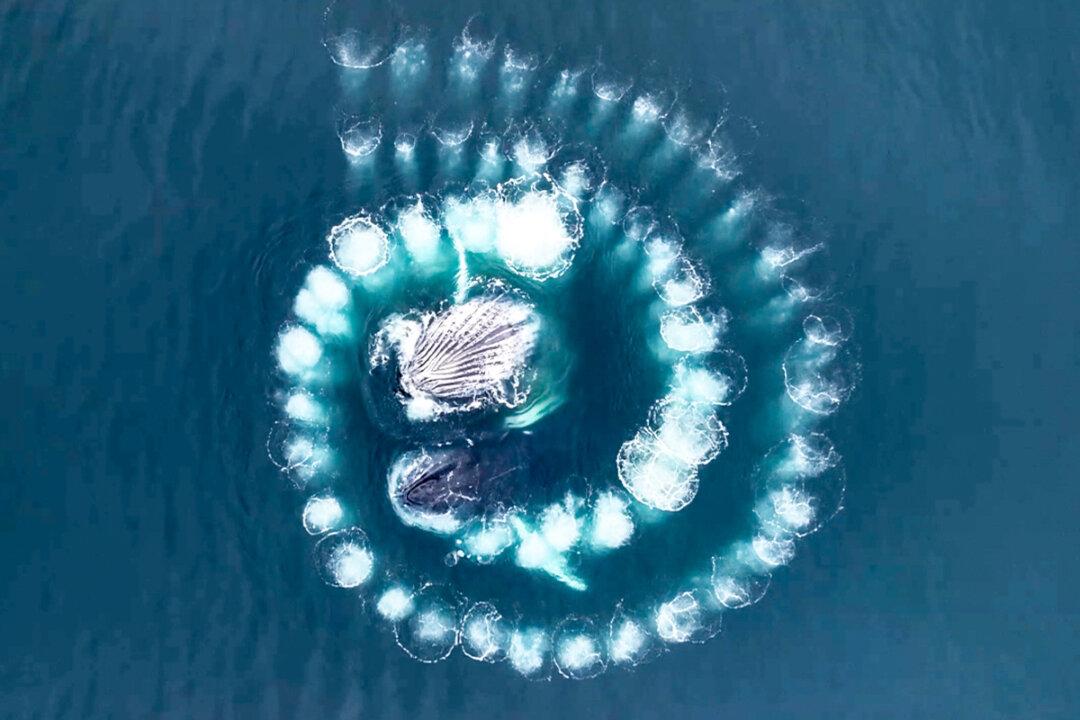A pair of humpback whales has been filmed from above creating a perfect spiral of bubbles under water, and the reason is compelling.
Piet van den Bemd, 28, a wildlife photographer from the Netherlands, was flying his drone over Wilhelmina Bay on the west coast of Graham Land on the Antarctic Peninsula when he caught two humpback whales on film. The whales were engaged in a phenomenon called bubble-net feeding and were working together to corral a school of fish to feed on.





